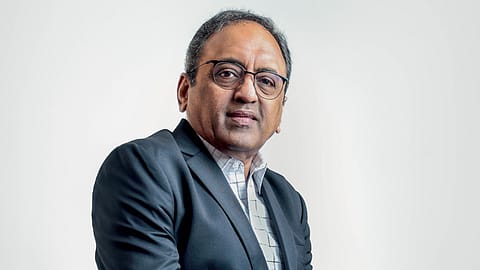L&T charts ambitious five-year growth blueprint; ‘Lakshya 2031’ in the works
The engineering giant is sitting on an orderbook in excess of ₹6.5 lakh crore, more than double the target set for 2026.

Having hit its 2026 five-year goals a year early, India's largest engineering and technology conglomerate, Larsen & Toubro, is already sketching out its roadmap for the next five years. “All our verticals are working on Lakshya 2026-2031. We will have the final meeting in November. Then, we will take it to the board in January or February, so that the strategic plan can take off by next financial year,” S.N. Subrahmanyan, chairman and managing director of L&T, told Fortune India in an exclusive interaction.
In 2021, L&T launched ‘Lakshya 2026’, a strategic roadmap that aimed for revenues of ₹2.7 lakh crore and an order book of ₹3.4 lakh crore (with a CAGR of 15% and 14%, respectively), and double-digit margins. The company’s revenue was ₹1.45 lakh crore, and the order book was just above ₹3 lakh crore in FY20. L&T achieved the goals a year ahead as it reported revenues of ₹2,55,735 crore in FY25, with a three-year CAGR of 17.8%. Profit After Tax (PAT) grew at a CAGR of 20.2% to ₹15,037 crore. Now, the company is sitting on an orderbook in excess of ₹6.5 lakh crore, more than double the target.
Subrahmanyan hinted that there will be no major diversification in the next five years. Efforts will be made to streamline existing businesses and build on the platforms already created for growth. L&T will exit some non-core businesses facing high competition and that are becoming commoditised. “We closed down some businesses. So, naturally, we had opened some new businesses so that the momentum is sustained. Some other businesses are getting commoditised, we will move out of that,” he explained.
In the past, L&T had divested non-core assets, like the Electrical & Automation (E&A) business to Schneider Electric for ₹14,000 crore (in 2018), a small marine automation business, a 99-MW hydroelectric plant in Uttarakhand to ReNew, the roads concessions, and the entire 51% stake in L&T Infrastructure Development Projects (L&T IDPL) and L&T Infrastructure Engineering Ltd (LTIEL). Hinting at more upcoming divestments, Subrahmanyan said, “More are on the cards, and soon you will hear.”
According to sources, the likely divestments may include non-core businesses such as the 1,400-MW Nabha Power Plant, despite its strong performance in recent years. “Our core competency is in building power plants, not owning and operating them,” the CMD said.
Hyderabad Metro, in which L&T has invested over ₹20,000 crore, is likely to be the next candidate for divestment. L&T has already announced its plans to exit the project by divesting its 90% stake. Other businesses, such as construction equipment, industrial valves, rubber processing machinery, and the two joint ventures with Mitsubishi for supercritical boilers and turbines, have also been marked as non-core. Internationally, L&T has narrowed its focus, especially in West Asia, to three key areas—hydrocarbons, power transmission, and renewables.
Subrahmanyan said thrust will be on growing the services businesses such as LTI Mindtree, LTTS, L&T Finance, and L&T Realty, where the scope for margins is higher. ''The services sector can grow faster than the construction projects and manufacturing business, but that does not mean we have decided to slow down the construction business. They will continue to do what they can. The services sector has to grow faster,'' he said.
Recommended Stories
He added that segments like defence and aerospace have big growth opportunities, but orders are not consistent. “I still view them as perennial start-ups. Orders have to be consistent,” he said.
